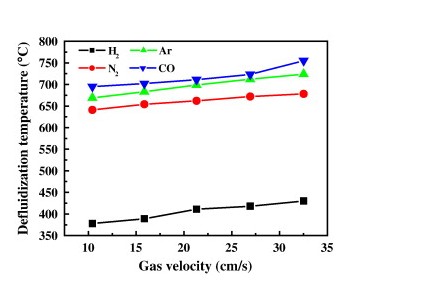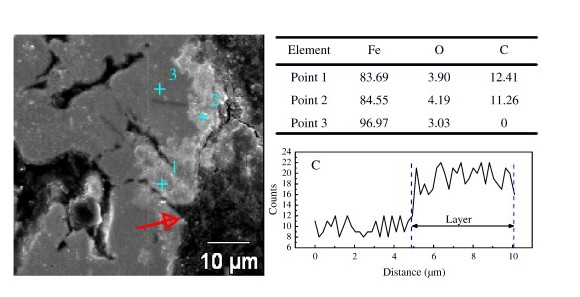The continuous operation and high productivity in high-temperature fluidized beds are often limited by the tendency of agglomeration among particles resulting in partial or complete defluidization. In the field of metallurgy, fluidized beds were tested but failed because of the serious problem of defluidization due to cohesion of metallic iron particles. It is therefore worth studying how the particles in fluidized beds behave in the case of high temperatures.
Researchers with Institute of Process Engineering (IPE) conducted experiments to investigate the defluidization behavior of iron powder in four different fluidizing gases (Ar, N2, CO, H2), especially in terms of the physical and chemical properties and change of the gas and solid phase at high temperatures.
The effects of the gas velocity, gas properties and gas adsorption on the fluidization quality and particle adhesion of the iron powders were studied in their work. Furthermore, the surface softening and adhesion property of metal particle were examined by thermo-mechanical analysis. The adhesive force was calculated, by which the temperature dependence of defluidization was explained.
The agglomeration tendency, represented by the temperature required to reach defluidization, decreased with increasing gas velocity (Fig. 1). The fluidization quality was improved by increasing gas density and viscosity, and thus the agglomeration tendency decreased. In particular, Fig.2 indicated that due to the chemical adsorption of CO, an inert coating of C or Fe3C formed on the surface prevented the iron–iron contact and thus inhibited the defluidization.
The thermo-mechanical analysis, examined the adhesion property of particles, indicated that the adhesion force due to surface softening which was not present at low temperatures appeared at higher temperatures and increased significantly with temperature.
Furthermore, based on the surface viscosity, the change of adhesive force calculated was in accordance with the observed trend of the minimum fluidization velocities, which suggested the increase of inter-particle force with temperature.
The paper was published in Power Technology.

Fig. 1. Dependence of defluidization temperature on gas velocity for different fluidizing gases (74–149 μm).

Fig. 2. SEM image of cross-section of iron particles after defluidization with an EDS analysis on the surface coating.
 Search
Search




 京公网安备110402500047号
京公网安备110402500047号